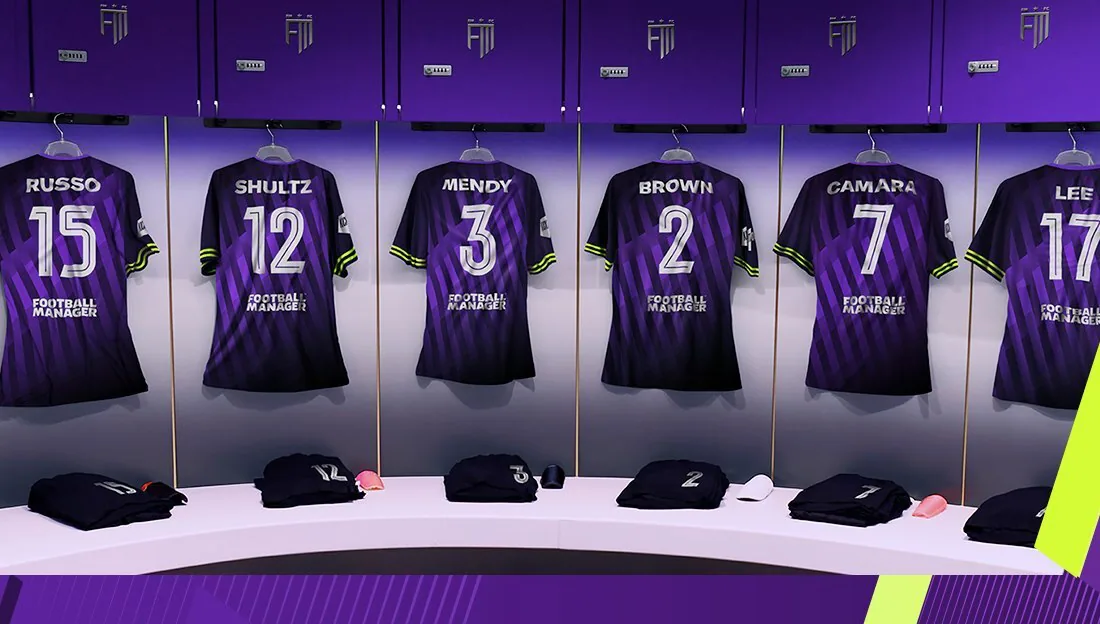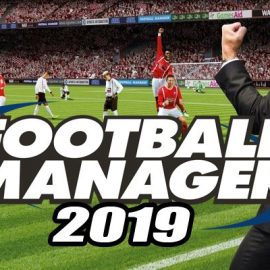Getting your tactics exactly right on FM is absolutely paramount, that’s for sure. I don’t think there’s ever been a game in the sports simulation genre that has required so much patience, accuracy and attention to detail when it comes to tweaking your tactical plan.
While transfers, training and the team you pick on match days will inevitably prove vitally important in your quest for success, if you fail to appreciate the significance of tactics on Football Manager, you will undoubtedly struggle to progress.
These days it’s not as easy as just sending out your team of world beaters on the pitch in a basic 4-4-2 formation and expecting them to trounce anything and everything that’s put in front of them. Yes in the past you may have got away with that but these days a player simply won’t perform to the best of their ability unless their tactical framework is moulded to perfection.
While I can’t offer you a sure fire way of possessing the perfect tactic that will suit every member of your squad, the explanations below (accredited to the FM game manual) should atleast aid you in understanding the complex nature of tactics within FM.
Team Instructions
Mentality
Mentality directly affects a player’s position on the field. His set position on the tactical pitch display is where he will line up as a base default, but depending on the mentality set he may be more restrained or cavalier in his approach. The slider ranges from Ultra Defensive to All Out Attacking. The further right the slider is set for the team instruction, the more aggressive your players will play positionally and more ambitious they may be when passing the ball (a more aggressive mentality will result in more forward passes).
Creative Freedom
Creative Freedom affects the tendency of your players to attempt the more difficult and ambitious. The slider ranges from Little to Much, and in short, the more creative freedom you allow your team, the more unpredictable they may be. A higher setting may see your players occasionally ignore your tactical instructions and attempt to do their own thing, but the degree of success depends on the technical prowess of your players. Given they’ll be attempting the more difficult stuff; they need to be of a sufficient caliber to make it count. Therefore, it may be advisable to limit this on a team basis and allow it for the more talented player(s) in your team.
Passing Style
Passing style is fairly simple – this dictates the range of passing your team will adopt. The slider ranges from Short to Long and the notches in between will gradually ask your team to play a more expansive passing game. When deciding upon the style of passing you want your team to use, you’ll need to consider how everything else will affect it, both in terms of tactics and personnel. Have your players got the required attributes to keep the ball comfortably over short distances? Does your passing style suit the tempo and mentality of your team? If you’re looking to play a direct game with an attacking mentality, your players may be launching longer passes from positions further up the pitch, which may prove wasteful.
Tempo
Tempo dictates the speed and urgency your team plays with. The slider ranges from Slow to Quick, and the further right you move the bar, your team will play a more up-tempo game and look to make things happen quickly and sharply. The tempo employed by your team can affect the success of your passing – it is entirely possible to play a quick, short passing game but when you increase the speed of something, mistakes can become more likely.
Width
The width your team lines up with largely comes into effect when they are in possession. The slider is set from Narrow to Wide. Setting the slider further to the right will indicate that you want your players to move towards the touchlines when they have the ball and in particular, get the ball to those in wider positions in order to stretch the opposition. A more narrow setting will attempt to bring the play inside and force matters through the centre of the pitch.
Without possession, your players are less inclined to follow your width instructions, but they will try to employ them as best they can against what the opposition is doing.
Closing Down
Closing Down represents how often, or how committed your players are, to closing down the opposition when they have the ball over the entire pitch. The slider is set from Rarely to Often. Increasing how often your players close the opponent down will put them under pressure when they receive the ball, but it can leave your team exposed for position and fitness, especially if your players don’t have the necessary physical attributes to be chasing opponents around for the whole game. Closing an opponent down will increase the chances of taking the ball from them and launching a counter attack, and is probably best employed in an attacking system – if you’re operating defensively with the intention to soak up pressure, your defensive shape doesn’t need to be compromised by players chasing the ball.
Time Wasting
Employing time-wasting is a defensive tactic designed to neutralise the attacking threat and frustrate the opposition. If used throughout the game, it is safe to assume the team using it are inferior to their opponents and are doing all they can to avoid defeat. Many other teams of all strengths may use it late in the game to hold onto a slender advantage. The slider is set from Rarely to Often and unless your team is one of the aforementioned inferior ones, this may be an option you use most in the closing minutes of games, or set depending on opposition/match context.
Defensive Line
The Defensive Line slider positions your deepest line of defense on the pitch. It affects the position the players take up both with and without possession. The slider is set from Deep to Push Up, and the further right the bar is set, the closer to the halfway line the defensive unit will advance when in possession. If your team is using a defensive mentality, a defensive setting on the slider will ensure they stay deep when the rest of your team attacks. If your team uses an attacking philosophy, the effect of the slider is lessened and players will advance – although a deeper line will see them err on the side of caution a little more.
When your team is not in possession the same applies, but in terms of nullifying the opposition. As soon as your team loses the ball, the defensive line will adopt the approach you have told them to and either drop deeper or push up. You may want to take the qualities of the opposition’s attackers into consideration before each match before deciding on your defensive line approach, as quicker players can get in behind an advanced line, and deeper lines can be exposed by direct play and a big target man up front.
Tackling
The Tackling slider determines the level of commitment and aggression your players will attempt to show when tackling for the ball. The slider is different from the others as it only has three options – Easy, Normal, and Hard. Hard tackling is most likely to exert authority on the opponent but is also most likely to inflict injury and disciplinary action against your players. Easy tackling negates this risk somewhat but also gives the opposition an easier time on the ball. Normal is a balance of the settings and is the best choice by default, but you should check your opposition’s disciplinary record and their record from set piece situations ahead of each game, as well as the type of player they have, before settling on your tackling approach for the match.
Focus Passing
This option is where you can tell your players where to generally work their play from. You have the option to direct all play down both flanks, either the left or the right only, through the middle, or a mix of all of them. The best use of this is in combination with other tactical settings, the strengths of your team and the weaknesses of others. For example, setting your Width to ‘Wide’ but directing play through the middle may work through stretching the opponent but you effectively ignore your wide players all game. If you have a left or right sided player of some ability, directing all play towards them can bring them into the game often and maximize the chances of their ability being used to great effect. Similarly, if the opposition has a weak link somewhere in the team, you can tell your players to focus their efforts on making his game a torrid one and yours beneficial.
Marking
The Marking option sets your team to play either a zonal or a man marking style. Man marking is the easiest and simplest to employ, as each player on your team is responsible for an opponent at all times. Zonal marking puts players in charge of an area of the pitch which they are then responsible for addressing should an opponent make their way into that ‘zone’. It is harder to employ as your defensive players will need top ratings in Anticipation, Concentration, and Decision as well as key defensive attributes, but if you have the players to implement it, some managers believe it to be a more effective defensive tactic as players are less likely to be drawn out of position, ensuring a solid structural foundation to your team.
Target Man Supply
If you choose to employ a target man, this option tells your players how to supply the ball to him. In simple terms, you should choose the option which best suits your target man’s attributes. You can have your players feed him the ball To Head, To Feet, to Run onto the Ball, or a mixture of them all. A tall, strong target man will benefit from aerial supply, whilst a skilful, quicker target man may prefer the ball to be kept on the floor.
Tight Marking
Tell your players whether you wish for them to mark their opponents up close or to allow themselves a little ‘give’ should they be beaten to the ball.
Use Target Man
Set whether your team plays to a target man. Such a player is a focal point in the attack which the team will look to involve in all attacking plays and feed off. Typically this player is big and strong, and capable of holding off opponents, but it can work with other types of players in the right system.
Use Playmaker
The playmaker is an almost cult role in world football – a fantasista – the player wearing the number 10 shirt. Those are the most common and typical types of playmaker but in short he will be the one player in your team capable of providing the difference-making play that very few others can’t. It can be a player anywhere on the pitch that you set as a playmaker (which you can assign from the ‘Playmakers’ panel option from the ‘Instructions’ menu), but ideally the selected player will be one who can make a difference offensively.
Play Offside
Decide whether your defensive unit should play the offside trap or not. To pull it off successfully you’ll need players who are mentally capable of focusing on the plan as well as a unit who know each other very well, and a sufficient mentality so as to not conflict with the option.
Counter Attack
The counter attack option is best used by an underdog facing a superior opponent or a team with players capable of launching attacks at high speed with a directness about their play. They will tend to sit back in their own half and allow the opposition to have the ball in ‘harmless’ positions before imposing pressure, taking the ball, and countering.
Player Instructions
Mentality
When set for a player, it applies in the same manner as it does for the team as detailed in the Team Instructions section.
Creative Freedom
When set for a player, it applies in the same manner as it does for the team as detailed in the the Team Instructions section. The player will act on his own authority at times and attempt to play with flair and trickery.
Passing Style
When set for a player, it applies in the same manner as it does for the team as detailed in the Team Instructions section.
Closing Down
When set for a player, it applies in the same manner as it does for the team as detailed in the Team Instructions section. Instead of setting an entire team to close down often, it might be advisable to allow your fittest player(s) to do a bulk of the work.
Tackling
When set for a player, it applies in the same manner as it does for the team as detailed in the Team Instructions section. The following sliders are different to the above and a majority of the Team Instruction sliders as they only have 3 notches to them – Rarely, Mixed, and Often.
Forward Runs
This slider controls how often your players make forward runs without the ball. ‘Often’ will see the player push into attacking positions and attempt to get by their marker – for wide players and full-backs this will increase the likelihood of overlapping runs. ‘Rarely’ will order the players to stand their ground and attempt to play their way through or around an opponent rather than going past them.
Run With Ball
This increases the chances of a player deciding to advance forward with the ball rather than giving it to someone else, if set to ‘Often’. ‘Rarely’ will restrict their dribbling and instead pass the ball onto a team-mate.
Long Shots
This controls the speculative shooting from distances further than 20 yards out from goal. It makes sense to limit these to players who have a high Long Shots rating else you’ll be wasting chances and turning the ball over to your opponents a lot.
Through Balls
This controls how often the player will attempt a through ball. Through balls are defined in the match engine as a pass that can ‘unleash’ a player behind an opponent, so not necessarily a pass through the last line of defence to a striker. When considering the use of through balls, take into account the passing ability of the player and the likely recipient of the pass, and what they’ll be able to do when they receive it. For example, a right-back playing a through ball to a right winger would likely do so along the touchline – will the winger then be able to make full use of the situation?
Cross Ball
This controls the volume of crosses put into the area by the player. Consider the player’s position before setting this – if he plays centrally but has ‘Often’ set for crosses, is he going to be crossing in at angles or moving wide and out of position to cross? The next few options are drop-down lists from which you may select one option.
Cross From
This defines where players should be looking to cross from. They can cross from deeper positions or they can make their way to the byline then send a cross back at a different angle. Alternatively, choosing ‘Mixed’ will allow the player to make his own mind up.
Cross Aim
When crossing, you can instruct your players to attempt to put the ball into a certain part of the penalty area. The ball can be played to the Near or Far Posts or the Centre, or if you have a target man set, the ball can be directed towards him. This is only the intention; the technical ability of the player determines whether the ball will be put in the right places regularly.
Swap Position
If your team uses wingers, you can use this function to tell one winger to swap positions with the other (and vice-versa) during a match, to freshen things up on that side of the pitch, keep defenders on their toes, and bring a different attacking approach if something isn’t working. Any player can be swapped with any other if your plans are ambitious and your players are versatile but take caution when doing it and consider how it may disrupt your formation if swapping a centre-back with a midfielder. The remaining options deal with check boxes and dropdowns.
Marking
For each upcoming match you can specify an opponent to be man-marked by a player from the ‘Marking’ option – select Man, then when the opposition line-up is available, wait for it to pop out and select the player.
Free Role
Allows the player almost complete freedom to move around the pitch and attempt to pull all of the strings to get the team working. Essentially this is a role that should only be given to a player of high caliber with the creative expression and attributes to make a difference.
Hold Up Ball
Is an option which will tell the player to put his foot on the ball and take a look around to see what’s on before moving it on and making the appropriate decision. It works best in a slower tempo game as the player will have more time on the ball to find his team-mates, who should be in closer proximity. A high tempo closing-down game from the opposition can force a player holding the ball up to make a quicker decision and not necessarily always choose the right one. It can also be used in tandem with a target man, who will physically hold the ball up and try and bring others into the game from his position.
Set Pieces
Each player can be employed in a different situation for set pieces, both attacking and defensive. Take some time to plan out how you want your set pieces to go, position your players, and then set them accordingly from the dropdown menus on the player instructions panel.
Add Sportslens to your Google News Feed!






